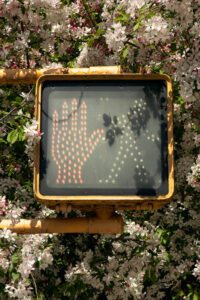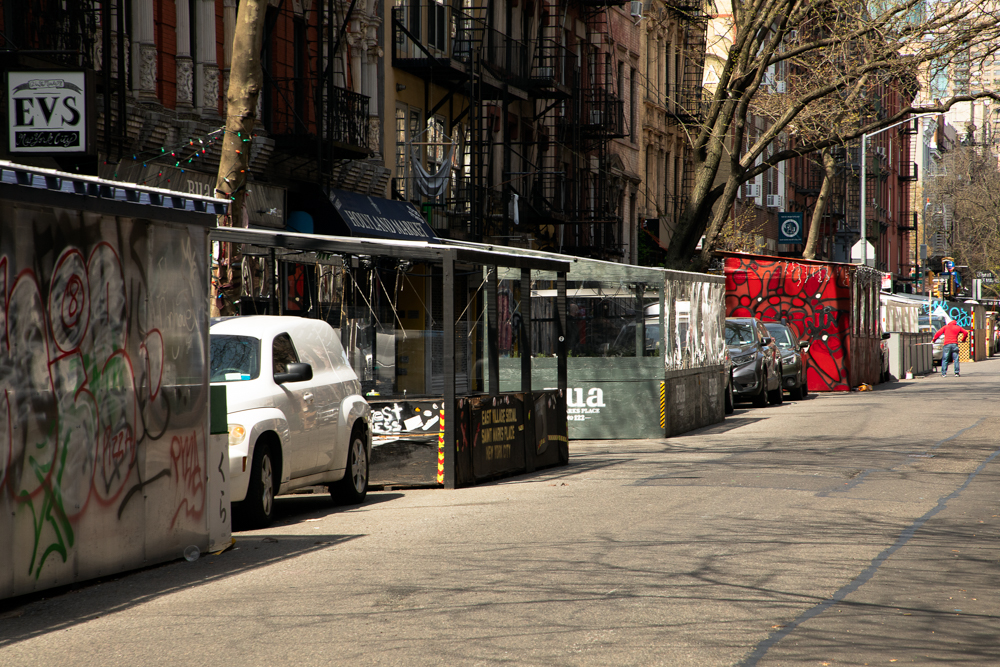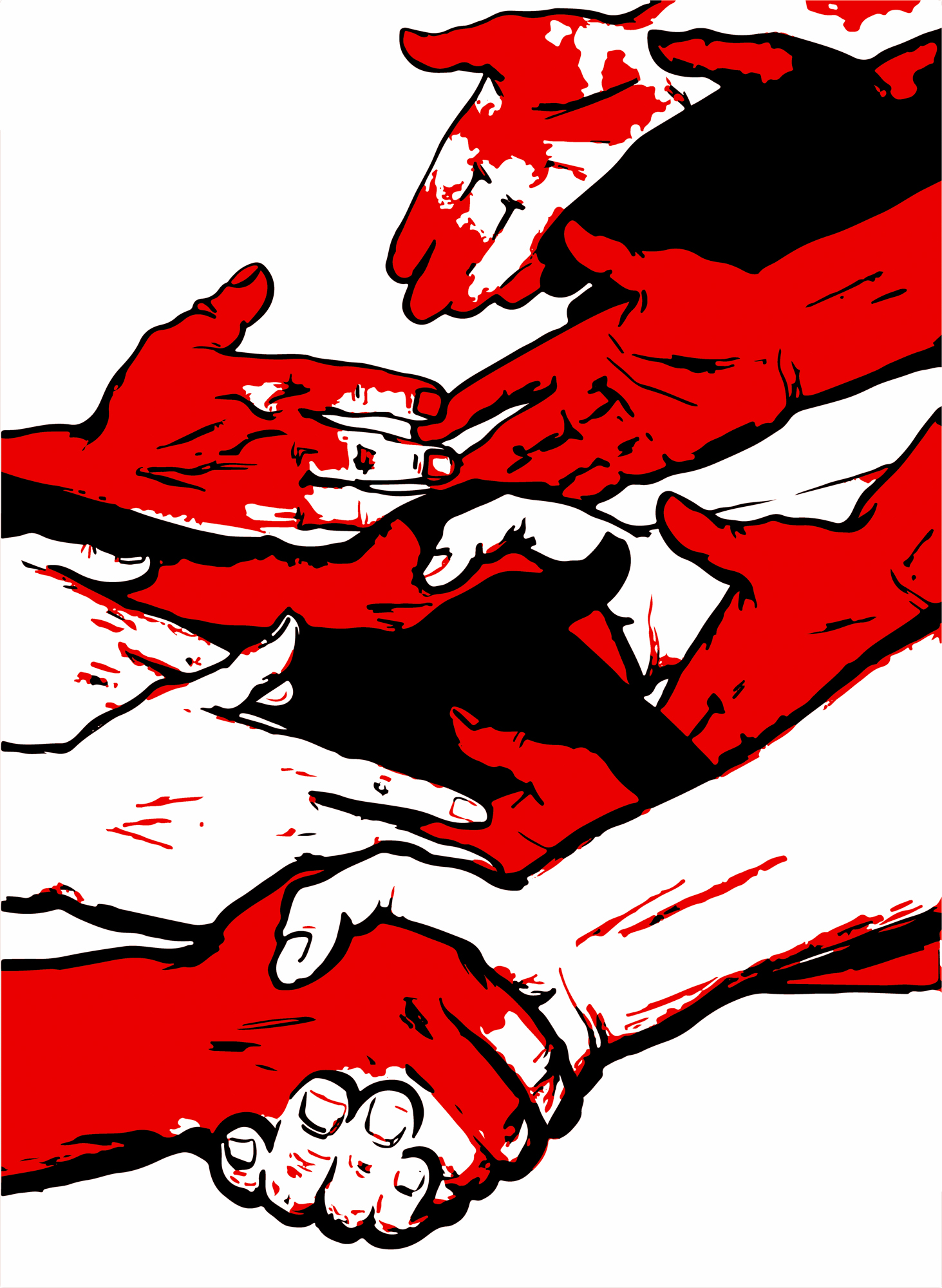Rethinking Public Space in New York City

Crosswalk Sign on Avenue B, 20 April 2021. Credit: Ari Adams
To walk down a New York City street in the late 19th century was to experience the full breadth of public and private life. Families, looking to escape cramped living quarters, spent their time outside, along with horse-drawn carriages, merchants, peddlers, and all the vile refuse this humming activity produced. Over decades, paved roads, necessary health ordinances, and the proliferation of personal transportation turned the streets into what they are now — or were, prior to the pandemic.
When it’s finally behind us, the COVID era will have left its stamp everywhere, like an infant left alone with an ink blotter. Of these changes, one of the most subtle — but potentially impactful — is the way it has reconfigured our understanding of public spaces, particularly in New York City. In the early months of the pandemic, justified fear turned the city into a ghost town: parked cars collected dust, pedestrians vanished from sidewalks, and shops, unpatroned, boarded up. The cacophony of city sounds was replaced by an unceasing wail of ambulance sirens. But as our understanding of the virus grew, and PPE became commonplace, New York began to return — and with it, a newfound appreciation for our shared public spaces.
“COVID made clear that in a city this dense, the streets have to be part of the community, and not just used for mobility,” said Mitchel L. Moss, a professor of Urban Policy and Planning at New York University. “The streets are no longer just used for vehicles; they’re used for the neighborhood and for life.”
Two major ordinances, passed this last year, codified these new needs. The first came last March, when the city piloted the “Open Streets” program, creating pedestrian plazas from city avenues. After a fumbling start, in which 1.5 miles of collective roads were converted into walkways, the program blossomed, and by the summer 67 miles had been allocated for pedestrian use. The most successful iteration was on Vanderbilt Avenue in Brooklyn, which became a destination for New Yorkers from across the city.

Street Barricade on Avenue B, 20 April 2021. Credit: Ari Adams
“The community embraced it with an enthusiasm that allowed it to take on a life of its own,” said Gib Veconi, chair of the Prospect Heights Neighborhood Development Council, in an interview with New York Magazine. “Eventually people from other neighborhoods all over the city started to come to Vanderbilt Avenue on weekends. We had musicians that came. People would picnic on the street medians. One weekend, a couple got married on the street.”
Not wanting to let a good thing go, Mayor Bill de Blasio, this past March, made the Open Streets program a permanent fixture. Beyond any tangible effects — home-bound residents now had new spaces to commune — the move also implied a philosophical shift, prioritizing the needs of the community at large over its subset of motorists, for whom the streets had been allocated. Whether intentional or not, de Blasio had also directed the city, in a strange way, back to the dynamics of the 19th century.
The city’s “Open Restaurants” program, introduced last June as a lifeline to the struggling restaurant industry, is also poised to have a lasting impact. The program allowed establishments to erect curbside structures — extensions of their indoor spaces — where diners could convene, with some protection from passing traffic, in a breezy, COVID-safe outdoor area. Like “Open Streets,” the program experienced a bumpy start, marred by a maze of conflicting regulations from the city, detailing the ways in which the structures could be situated and used. But by the time the program was set to expire in October, it had become so popular that the Mayor decided to make it permanent: “As we begin a long-term recovery, we’re proud to extend and expand this effort to keep New York City the most vibrant city in the world. It’s time for a new tradition,” said de Blasio, in a statement given at the time.

Seating for Outdoor Dining, 20 April 2021. Credit: Ari Adams
“This has been a fabulous thing,” said Moss, reflecting on the development. “A fabulous way in which New York has become livelier outdoors.”
Moss’ view is not shared by all — a number of community groups, namely in the West Village, have objected to these structures, arguing that the noise is disruptive — but, judging by their daily overflow of patrons, it seems that New York City residents have largely embraced this “new tradition.”
While it may sound trite, the COVID era has reminded us, like a family made closer by tragedy, how important community is to our collective and individual wellbeing. Our newfound appreciation for public space is significant, and potentially enduring, manifestation of this feeling.




